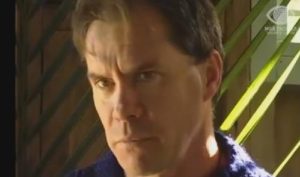1996: Rahui or Rah-hooey?
January 5, 2021
By AHNZ
A rahui is a race-based hegemony over territory and resources based loosely on a concept from anthropology textbooks. This form of Victimhood Culture Adventuring seems to date from the mid-late 1990s. It’s a sort of magic spell, or Social Constructivist forcefield. It’s a ‘keep off the grass’ sign powered, not by anything legal, but by the will power of a certain set of people. During the Victimhood Culture of the late 2010s the ‘rahui’ has been revived and used more and more. For example, a rahui was placed on White Island after its deadly eruption in 2020 to the effect that none may visit there for the time being.
Is it an authentic tradition or just a bunch of hooey? New Zealand is figuring that out now.
“…I completed more research into that….Maori from the Kaipara had completely forgotten about [rahui.]
“…when the rahui was first mooted upon this marae a lot kumatuas said ‘I can’t remember a rahui ever being put down for conservation purposes therefore it never existed!'”
“Just as much a nonsense as saying ‘I wasn’t present during the signing of the Treaty therefore the Treaty is just a fraud.'”- Mikaera Miru (2006)
Like the word ‘Aotearoa’ for New Zealand, or ‘Otautahi’ for Christchurch, or ‘Matariki’, the idea of ‘rahui’ is a revisionist concept recently devised but presented as if it had a traditional continuity. Do you know any rahui prior to November 1997?
 Mikaera Miru takes responsibility in the Kaipara for developing the idea of rahui. His Maori elders at the time pushed back, saying there was no such institution in their culture as this. Miru gets around that, saying that they “completely forgot.” Going on with this Socratic line of legal scholarship, Miru argued that never having heard of his suggested idea did not mean he had made it up or that it was a fraud. Indeed, traditions and customary rights needed no continuity or awareness on the part of custodians. The rahui was seemingly an ancient customary right (although invented in the 1990s) waiting, latent, to be revived.
Mikaera Miru takes responsibility in the Kaipara for developing the idea of rahui. His Maori elders at the time pushed back, saying there was no such institution in their culture as this. Miru gets around that, saying that they “completely forgot.” Going on with this Socratic line of legal scholarship, Miru argued that never having heard of his suggested idea did not mean he had made it up or that it was a fraud. Indeed, traditions and customary rights needed no continuity or awareness on the part of custodians. The rahui was seemingly an ancient customary right (although invented in the 1990s) waiting, latent, to be revived.
Whatever provenance the genuine Maori rahui had it must have flowed from the chiefly and noble class and their witchdoctors, not the common man or a committee. And, it must have only applied to those lower down the hierarchy, such as the slaves, in the same tribe. Of course no invading tribes would respect a rahui or there would be no need for forts and endless wars. As such, a rahui is synonymous with a chief’s whim or demand of his subjects. A fancy name for bossing around inferiors.
Despite being yet another instance of cultural counterfeit currency there it something appealing to Anarchists within the rahui fraud. It’s an expression of Localism, of people taking responsibility for their own territory rather than always bowing and scraping to Central Government. It’s anti-Statist. It’s active rather than passive.
 For example, the Croesus Track, which begins near Blackball, was established by Victorian gold miners then, over time, extended and a hut built. The track and hut became then, part of the local commons. Things were going pretty well but then the Paparoa National Park was established and The State, the Department of Conservation (DOC,) began to administer the commons. The hut remained free to use and locals with an interest took responsibility and made rules to keep it sound. Then, after the Pike River mining disaster The State felt guilty and decided to ‘help’. Croesus was made into a “Great Walk” and now it’s run by The State as a tourist destination. It’s busy, crowding out the locals. Camping is prohibited now and you must pay DOC $45.00 to stay in ‘their’ hut which you must also book in advance (if you can.)
For example, the Croesus Track, which begins near Blackball, was established by Victorian gold miners then, over time, extended and a hut built. The track and hut became then, part of the local commons. Things were going pretty well but then the Paparoa National Park was established and The State, the Department of Conservation (DOC,) began to administer the commons. The hut remained free to use and locals with an interest took responsibility and made rules to keep it sound. Then, after the Pike River mining disaster The State felt guilty and decided to ‘help’. Croesus was made into a “Great Walk” and now it’s run by The State as a tourist destination. It’s busy, crowding out the locals. Camping is prohibited now and you must pay DOC $45.00 to stay in ‘their’ hut which you must also book in advance (if you can.)
“Then the Paparoa National Park was established and DOC began to administer the commons. The hut remained free to use and we put up with the signage, banning of dogs etc. However, Pike came along and government guilt led to the recent building of the Paparoa Great Walk, both as a tribute to the dead but also being seen as a means of invigorating the local economy.”
“It is interesting to observe the dynamics of a Great Walk (which is also open to mountain bikers). The vehicle relocation service is more popular than the shuttle. Why? Presumably the same reason that the private car is more popular than public transport. Flexibility – and you don’t have to relate to ‘the public’.”
“And we no longer go for a walk up Croesus.”- Commodification, Paul Maunder (2020)
The Statist control of our local places like the Croesus and Kaipara are due to weak boundaries, low Social Capital. If someone else started kissing his wife or disciplining his pets or modifying his car then a New Zealander would still feel right were on his side for intervening and resisting an unjust claim on his own territory¹. There was a time in our history when this moral authority was strong and accepted as common sense when it came to geographic territory too. I think we still feel indignity when our territory is breached but have been trained to repress it in all but a few remaining vestiges.
 Previous generations would not have allowed The State to take their harbour, or confiscate their walking track. Bodies are still unrecoverable at Pike River Mine but that disaster happened in 2009 and central Government told rescuers not to act and they obeyed. This would have been incomprehensible to 1890s New Zealanders such as those of Kaitangata and Brunner who needed no permission to act.
Previous generations would not have allowed The State to take their harbour, or confiscate their walking track. Bodies are still unrecoverable at Pike River Mine but that disaster happened in 2009 and central Government told rescuers not to act and they obeyed. This would have been incomprehensible to 1890s New Zealanders such as those of Kaitangata and Brunner who needed no permission to act.
A rahui is not the answer because it isn’t the truth, it’s a fraud. New Zealanders, Anarchists, need to take back their lives from The State. To invent an excuse with a mythical back-story to be who you are and exercise your rights over your own local territory is to avoid autonomy. It’s to falsify one’s own existence, wearing a costume of someone else, in order to get by tricks and duplicity what is one has every right to.
Unfortunately, the rahui, another sad instance of the Statism syndrome, is catching on. The Government have already contained it though by taking legal control. The Ministry for Primary Industries, drawing on the Fisheries Act (1996) have taken over the legal territory of the rahui, reserving for themselves the power to sanction one as concerns fishing. They’ve put a rahui on the putting down of rahui! If the idea of rahui ever challenges The State they’ll simply appropriate it the same way they do everything else.
—
1 Would like to include ‘his children’ but I think the discipline and education of children has been surrendered to The State at this point
Ref. An extract from The Kaipara Affair (2006) in which Mikaera Miru discusses the c.1997 establishment of the institution of ‘rahui’; The New Zealand Archive of Film, Television and Sound
 Like Comment Share
Like Comment Share







One thought on "1996: Rahui or Rah-hooey?"